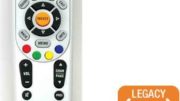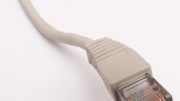OK, let’s just get this out of the way. DIRECTV’s AIM meter ain’t cheap. You can look for it on the secondary market if you want. You’ll find a lot of older hardware that can’t be updated and probably needs new batteries. Then you find out the batteries are super expensive too. Trust me, it’s not worth it.
But for your average tailgater, that’s a lot of money to spend. Believe me, I hear ya. I really do. So what can be done?
First, a pitch for the AIM meter
Before I go further, I have to tell you I’ve been using the AIM meter in its different versions for about ten years. It is an awesome piece of equipment. Before I used that, I used a Birdog, which was a very nice meter that I gave high marks to in an old video. But compared to the AIM it’s not worth it. The AIM literally walks you through the process step by step. If you have even the most basic understanding of how to aim a dish, if you have a phone with a compass app and a crescent wrench, you will be able to align a dish with an AIM meter. Ask yourself how much your time is worth.
But enough with the commercial. Let’s get down to it.
Can another meter cut it?
Simply put, no. And sadly there’s a reason for it. DIRECTV’s technology is different from that of literally every other satellite company out there. DIRECTV dishes use a frequency range that no one else in North America is using for satellite TV. Their implementation of the DiSeqC standard, which helps the receiver or multiswitch know which signal to choose, isn’t standard. Their SWM technology is proprietary. So, when it comes to satellite meters, simply put no one else knows how to do it.
DIRECTV can do this because they are a private service offering something only to their customers. They have to publish some stuff to get past the FCC, but there’s a lot of the “secret sauce” that simply doesn’t have to be disclosed to anyone. I’m guessing that given enough time, some hacker could probably disassemble an AIM and reverse-engineer it. But no one has done it. There’s not enough of a market for meters that do what the AIM does.
You can buy plenty of things claiming to measure satellite signal. All of them will read the signals used by European satellites or free-to-air US satellites, of which there are very few. For DIRECTV, they’re a waste of money, even though they’re low-priced.
At Solid Signal, we sell this meter, which works for older DISH and DIRECTV installs. It doesn’t work at all for current DIRECTV hardware. Simple as that.
Is there any hope?

Well, yes. Yes there is. There’s a way to align your satellite dish without an AIM meter, using nothing but a compass and other equipment you have. Every DIRECTV box, except for the Genie 2, can be connected to a TV and you can pull up a signal strength meter. You can use this to get the same basic readings you would get from an AIM meter.
If you’re industrious, you could even bring a receiver up on the roof with you, hook it and a small TV up to a long extension cord, and get what you need that way. Or, you could aim an internet-connected camera at your receiver and look at it on your phone. There are options… sort of.
The point is that it can be done this way. I’m not saying it should. I know plenty of people who’ve aligned dishes this way. I’ve done it. It takes a lot longer. Fine-tuning can be a chore, especially. But if you’re dead set against an AIM meter, there’s an option.
Get what you need to do it your way
At Solid Signal, we don’t judge. We’re here to help you do it your way. No matter what your dream is, we want to help you achieve it. So, shop for the tools the professionals use at Solid Signal. Or, just look and see what you can put together. If you think something might work, call us at 888-233-7563. We’ll give you a sanity check. We’ll lay it out straight for you.
As I said, personally I love my AIM meter. It’s paid for itself over and over. But hey, you do you and I’ll support you. That’s what I’m here for.





